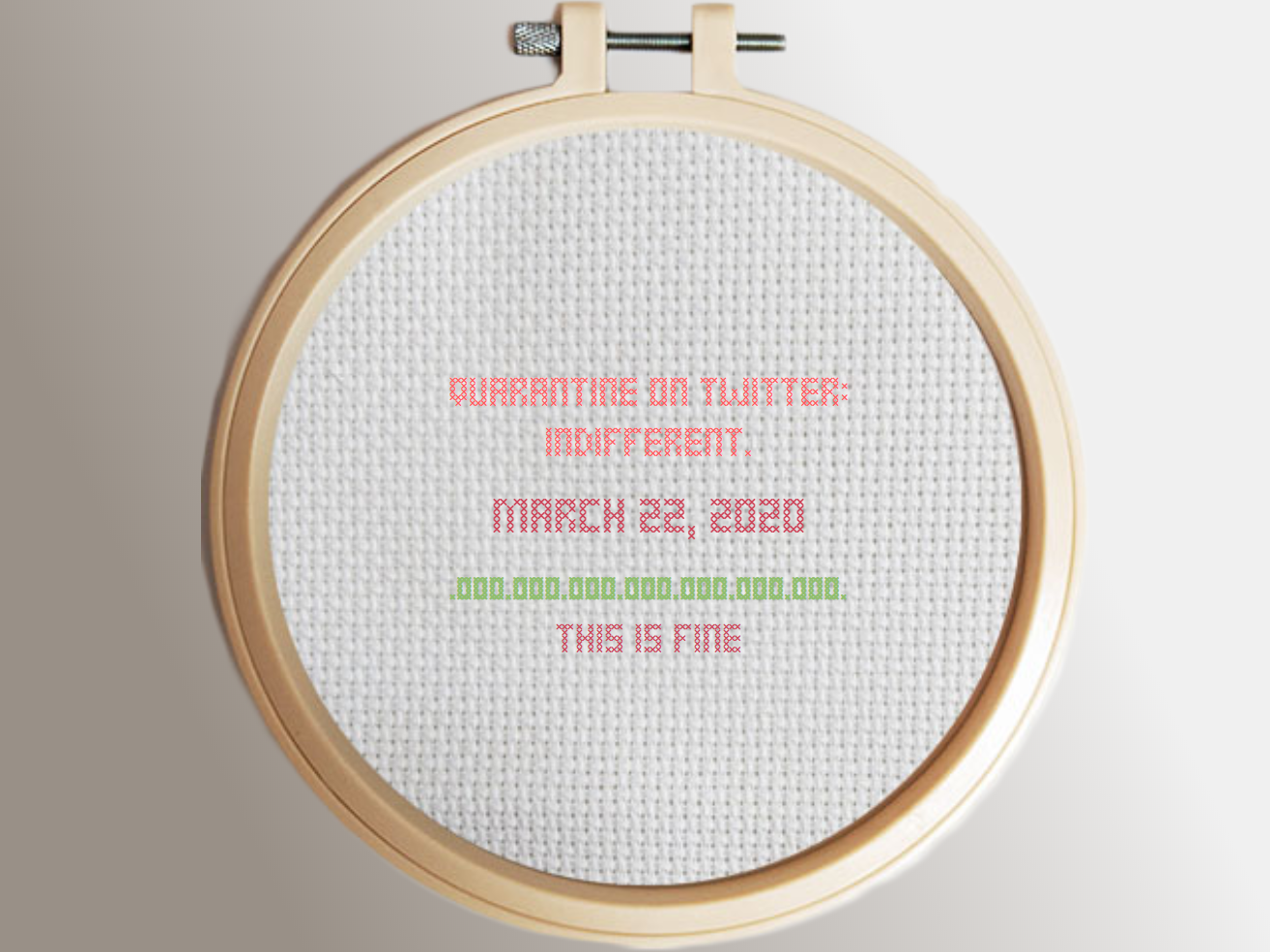Tension Assembly
John T. Murray and Anastasia Salter
Tension Assembly is a collaborative piece colliding the physical and digital; the augmented with the decorative; and the domestic with the imaginary. The original installation was intended as a physical display of generated poetic samplers, designed using Tracery, a procedural library for SVG imagery and wordplay developed by Kate Compton. In its place, this digital iteration will slowly rebuild its sayings. The Tracery procedural processing subverts the feminine, domestic-coded expectations of the embroidered poem, melding the familiar with the apocalyptic, and drawing upon current world events and fears for inspiration. The augmented, imaginary, layer of the piece builds on top of these physical samplers, using the text and imagery to anchor the imagery and reflection on the poetry in the current moment. These “annotations” encode and reveal the multiple layers of meaning and diverse perspectives physical works inherit when moved from context to context. The fascination with apocalyptic imagery and fiction is found everywhere in current visions (or lack thereof) of the near-future. Such fiction depicts a moment of tremendous change, often around access to technology due to some cataclysmic event. The combined fear and desire for freedom from the complexity and burden of modern technology and the idealized society that would emerge from the ashes are invoked in this piece through motifs and modern techniques spanning kinetic typography and fabric arts.
By colliding the crafted physicality with the digital layers of augmented reality commentary, we intended to engage the fundamental tensions of gendered manual-mechanical labor and evoke the conference’s theme of “(un)continuity,” breaking the binary and inviting the viewer to consider where each artist--and machine’s--labor begins and ends in the assembled work. Drawing on the traditions of computational craft, the work leverages a traditional fiber art rarely represented in technical spaces. The augmented reality annotations incorporate the procedural genesis of the physical artifact, incorporating undulations of text and rhythm that juxtapose the intertwined cause and effect of world-changing events and the domestic context they are witnessed within. However, this new, smaller, iteration, instead evokes the disruption of those very spaces and practices, as we all occupy an abruptly crowded domestic sphere.
In order to see the annotations for this exhibit, you must load the AR Web
App and point it at the image of the hoop. You can scan this QR Code and
tap the resulting link on most Android and iPhones:

You can also navigate to the AR web app
here using a recent mobile version of Chrome or Safari on your
smartphone.
About the Artist
John T. Murray is Assistant Professor of Digital Media at the University of Central Florida, USA. He is a co-author of Adventure Games: Playing the Outsider (2019) and Flash: Building the Interactive Web (2014). His research focuses on interactive narratives and reality media (augmented, virtual and mixed reality). He developed Salt Immortal Sea with Mark Marino and Joellyn Rock.
Anastasia Salter is Associate Professor of Digital Media at the University of Central Florida, author of Jane Jensen: Gabriel Knight, Adventure Games, Hidden Objects (2017) and What is Your Quest? From Adventure Games to Interactive Books (2014), and co-author of Adventure Games: Playing the Outsider (2019), Toxic Geek Masculinity in Media: Sexism, Trolling, and Identity Policing (2017) and Flash: Building the Interactive Web (2014).
